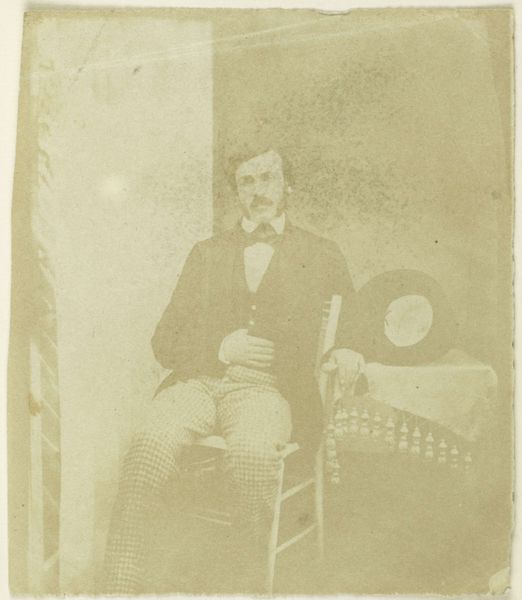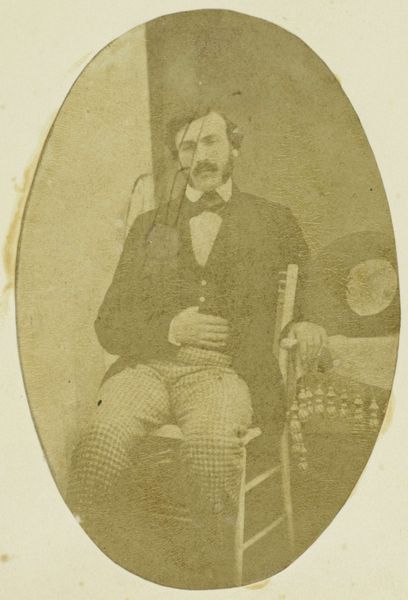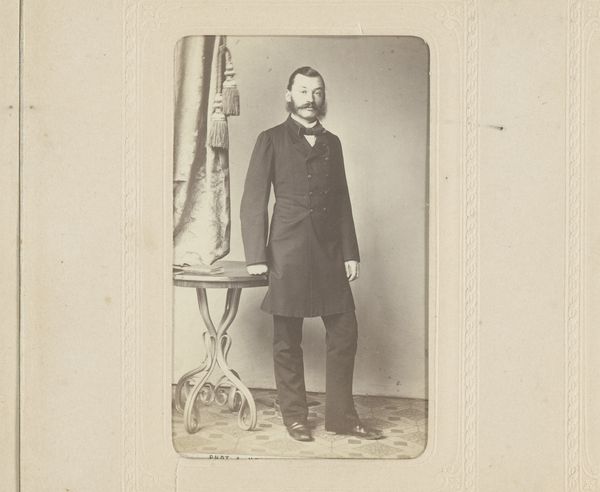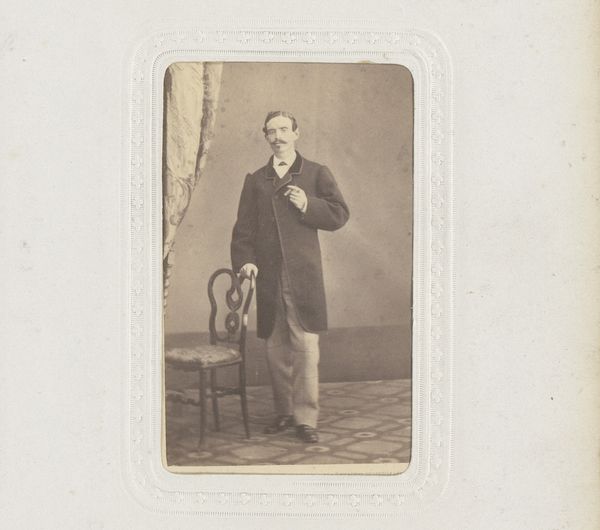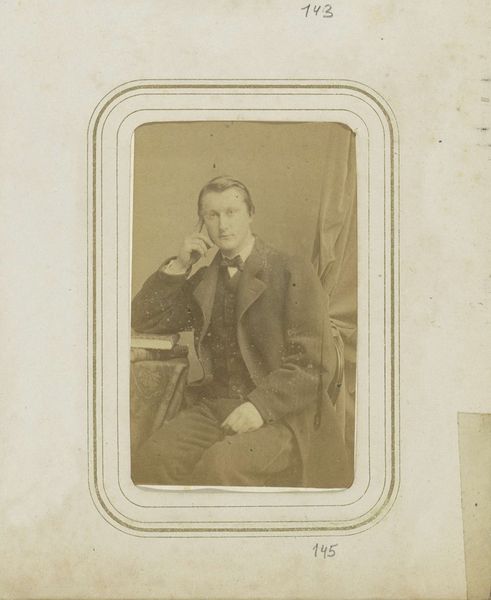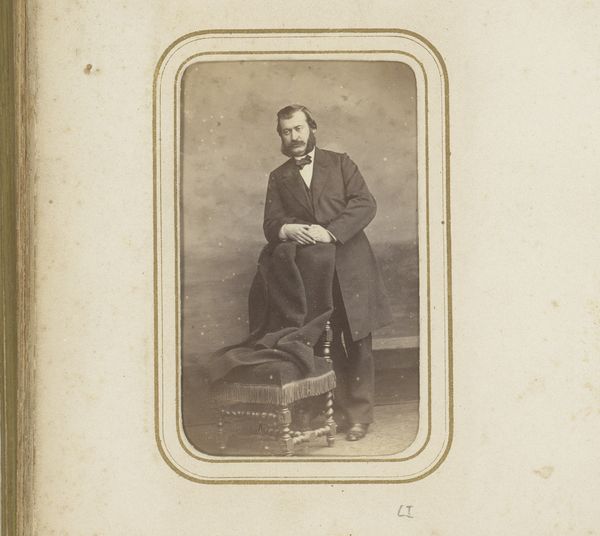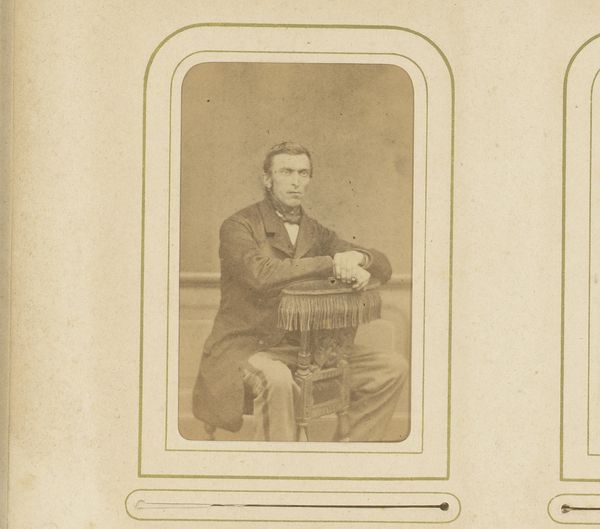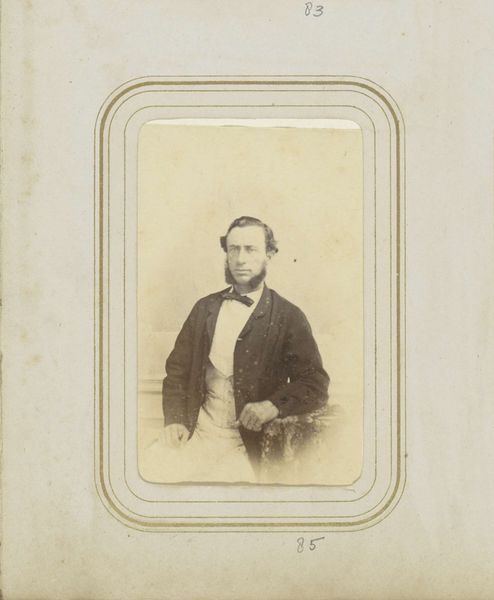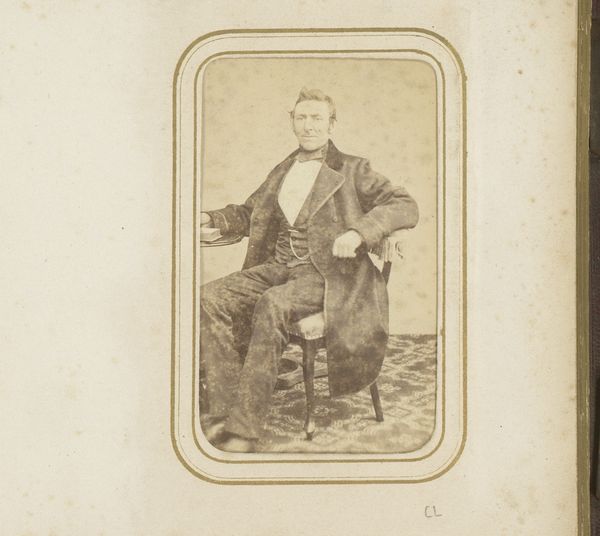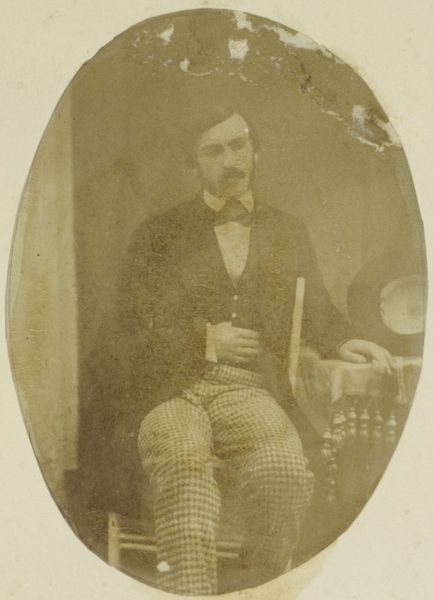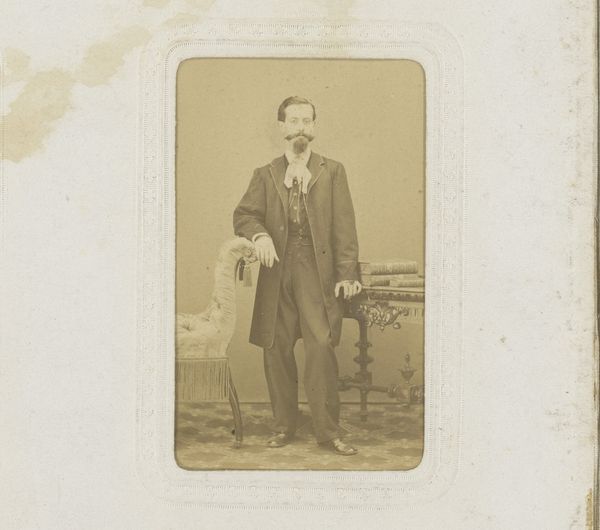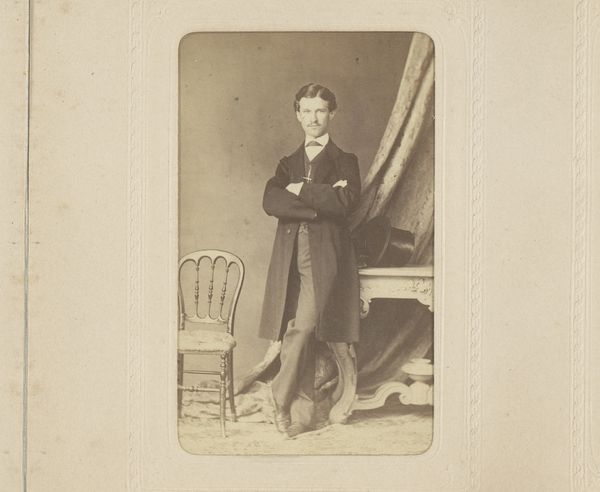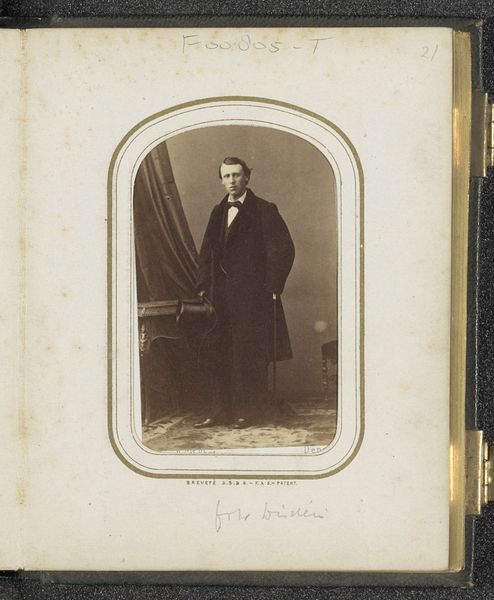
daguerreotype, photography
#
portrait
#
aged paper
#
toned paper
#
light pencil work
#
daguerreotype
#
photography
#
realism
Dimensions: height 109 mm, width 94 mm
Copyright: Rijks Museum: Open Domain
Editor: This is a daguerreotype, titled *Portret van een jonge man*, created around 1854 by Eduard Isaac Asser, held at the Rijksmuseum. What strikes me immediately is how the passage of time has softened the image, creating this sense of someone reaching out from the past. What do you see in this portrait? Curator: I see a potent reminder of how we construct identity, and how identity gets remembered. This image, fixed through the emerging science of photography, presents us with a deliberate staging. The sitter's hand placed on his stomach--what does that gesture signify? Editor: Authority, perhaps? Or maybe just a comfortable pose for a long exposure? Curator: Perhaps both! But consider how power is conveyed in images. This gesture has echoes in formal portraiture for centuries, and so embeds him within a visual history. And the hat resting on the table; what unspoken narrative does that prop suggest? The sitter invites the viewer to extrapolate, engaging with broader cultural symbols of wealth, intellect, and so on. It allows the viewer to craft a memory, real or imagined, tied to that era. What continuities do you notice in terms of posing that carries on into later portrait photography, even in our present era? Editor: Well, this seated pose is quite conventional. We see it even now. Maybe the choice of clothing—that’s changed a lot! Curator: Indeed, but it's intriguing to ponder what visual tropes *we* now employ to signify similar ideas about ourselves. What stories will our portraits tell in a century? What continuities might an observer find in our symbolism and staging? Editor: It makes you think about the things we take for granted that may someday carry unforeseen weight. I see now that it's more than just a historical photograph; it’s about the evolving language of visual identity. Curator: Precisely. It reflects not just who this man *was*, but who he and the photographer wished him to *appear* to be, according to a symbolic framework still subtly present today.
Comments
No comments
Be the first to comment and join the conversation on the ultimate creative platform.
